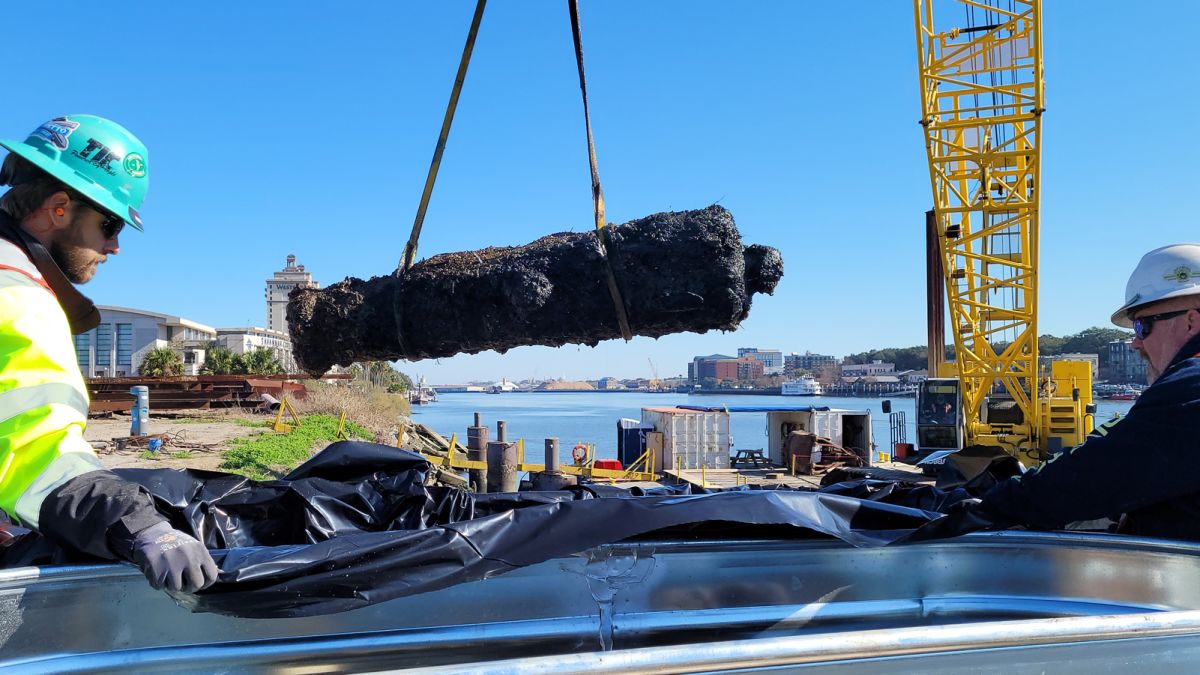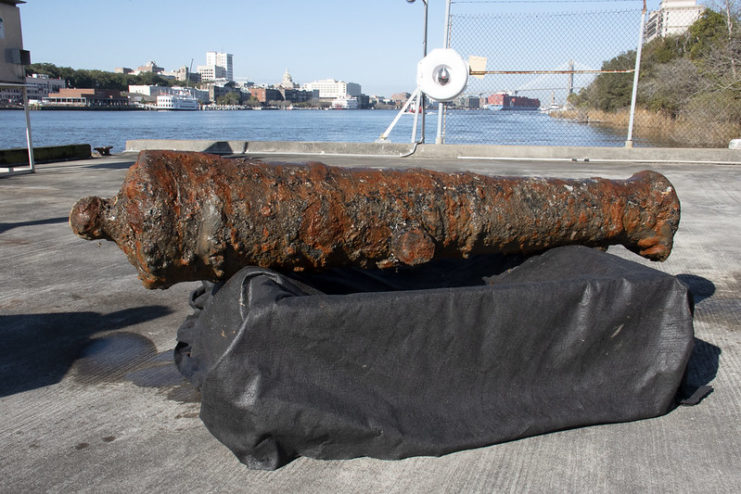The Savannah River has once again revealed its wealth of historical artifacts, as the US Army Corps of Engineers’ Savannah District recently accomplished the remarkable feat of retrieving twelve cannons from the Revolutionary War era from its depths. This discovery represents a pivotal moment in American history, unearthing remnants from the tumultuous times of the American Revolution. These artifacts not only provide a window into the past but also highlight the ongoing dedication to preserving and comprehending historical treasures.
Discovery and Recovery
In February 2021, while conducting dredging operations for a local port expansion project near Old Fort Jackson, crews unexpectedly discovered a cache of cannons submerged in the Savannah River. Initially, it was thought that these artifacts originated from the American Civil War. However, further investigation revealed that they date back to the American Revolutionary War, specifically to the Siege of Savannah in 1779. This find was part of a larger group of 19 cannons uncovered through continuous dredging and remote sensing technologies.

Twelve of these cannons were successfully raised in mid-January 2022, precisely one year after their initial discovery. The dredging efforts also revealed three additional cannons from the mid-1800s, showcasing the river’s layered historical significance. The recovery operation, orchestrated by the US Army Corps of Engineers’ Savannah District, was a complex task involving meticulous excavation and preservation of these valuable historic artifacts.
Historical Significance
Andrea Farmer, an archaeologist with the Corps of Engineers Savannah District, emphasized the immense potential for further discoveries within the riverbed, stating, “There is no telling what all is down there; so much of the river is unknown.” The discovery of these cannons aligns with earlier finds along the river, including Native American pottery and debris from an American Civil War-era ironclad that sank in 1864.

There are speculations that these cannons may have belonged to the HMS Rose, a distinguished British warship that was scuttled in the Savannah River during the American Revolution. This maneuver was intended to prevent French vessels from supporting American colonists, though it failed as the Rose sank further upstream than anticipated. While some believe these cannons could have originated from Civil War-era ships or been discarded by troops at Old Fort Jackson, the prevailing theory supports their connection to Revolutionary War-era vessels.
Analysis and Preservation

The recovered cannons, along with other artifacts, are currently being preserved in water-filled containers while awaiting a detailed conservation plan. Preliminary analysis suggests that these cannons were crafted in the mid-1700s. Experts indicate that they likely belonged to British ships that were scuttled to impede French advances during the Siege of Savannah. Specifically, the HMS Savannah and possibly the HMS Venus are suspected sources of these artifacts.
The Corps of Engineers is conducting archival research and working to locate records from the HMS Savannah to uncover more about its armaments when it was scuttled. This information will be vital in accurately identifying the cannons and grasping their historical significance.
Conclusion
The retrieval of these Revolutionary War-era cannons from the Savannah River illuminates not only the strategic military tactics employed during the American Revolution but also underscores our commitment to preserving shared history. As research and conservation efforts progress, these artifacts will eventually be showcased, offering the public a tangible link to a crucial period in American history. The Savannah River continues to serve as a rich reservoir of historical artifacts, with each discovery providing fresh insights into our past and enhancing our understanding of the Revolutionary War era.

